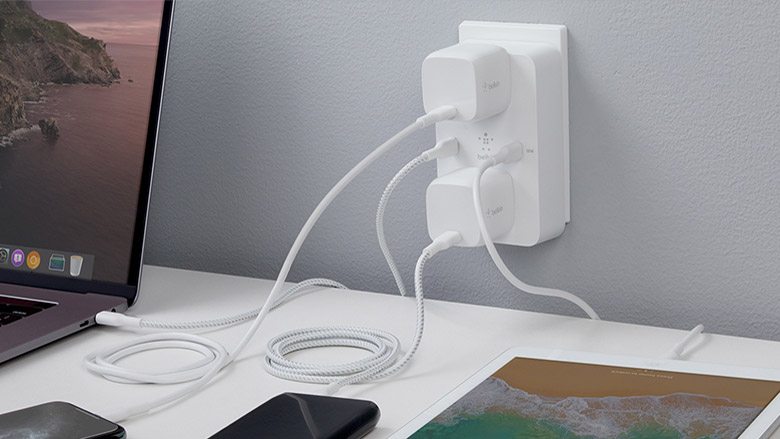How To Choose The Right USB Wall Charger

Discover our USB charger recommendations for your iPhone or Samsung
So you really want another
USB wall charger for your telephone? Perhaps your device didn't come with one out of the container, a pattern that is developing with telephone manufacturers. Charging a telephone is sufficiently straightforward, yet the sheer measure of charging guidelines, cables and discretionary quick charging don't assist with making the process of choosing the right charger any simpler. Luckily, we are here to assist with pursuing the choice more straightforward for you with our own scope of wall chargers to choose from here. We should separate a portion of the key data you want while looking for a dependable wall charger.
1. Figure out how much power you want (W)
While considering a USB wall charger your most memorable concern is how much power your device needs to effectively charge. This will frequently list the extremely greatest charging power a given device is capable of. You can go to the manufacturer's site/spec sheet for this. As a general rule, cell phones expect between 18 - 120 W (watts) of force.
2. Investigate the upheld charging protocol
By and large, there are three cell phone charging principles, and these are:
• Widespread - USB Power Conveyance (USB PD): the most common USB - C charging standard for telephones.
• Restrictive - OEM-specific charging principles: Restricted to manufacturer products which might offer exclusive quick charge technology which you won't find in outsider fittings.
• Legacy - Pre - USB - C: obsolete and gradually being deliberately transitioned away from, generally found on more established lower fueled telephones.
So the way to correctly choosing a wall charger for your telephone that will charge at the quickest speed is guaranteeing sufficient throughput wattage while supporting the required charging standard.
3. Check the result charging rate of your wall charger
Continuously make sure to take a gander at the Result of the Wall charger also prior to purchasing,
• 5V 1A: A 5V 1A charger implies it's a 5W charger (5Vx1A=5W)
• 5V 2A: Likewise 5V 2A charger is a 10W charger.
Effectively a 5V 2A charger will charge quicker and all the more efficiently.
4. Consider the quantity of charging ports upheld
It's essential to exposed as a top priority the utilization case for your wall charger prior to purchasing. Futureproofing is critical, do you exclusively require your charger for one device? Maybe you wish to have the option to charge two versatile devices simultaneously such as a telephone and a tablet. Consider your utilization case carefully to expand the handiness of the charger you purchase and check that it has the correct USB ports expected for your device cables.
5. Assess the wellbeing highlights of your wall charger
Input/yield control, voltage guideline, and overheat protection, are all wellbeing highlights that ought to be a gauge consideration while choosing your wall charger. These will control power all through the charger, forestall shortcircuits and guarantee that your charger won't overheat. Without these, your wall charger or connected devices could be harmed, or in the most dire outcome imaginable cause a fire. All HGD wall chargers come with cutting-edge wellbeing highlights as standard for peace of psyche.
6. EU new all inclusive charger policy and UK in conflict
A significant last note! It has recently been accounted for in the news that the EU will normalize
USB - C connectors across all versatile devices toward the finish of 2024, including mobile telephones. It's easily proven wrong whether this move is something beneficial for consumers as charging cables will be more widespread across devices, though at the present your telephone might require Apple's restrictive lightning cable, yet your tablet might utilize USB - C. Critics anyway are saying that the move will smother development and eventually hurt consumers.